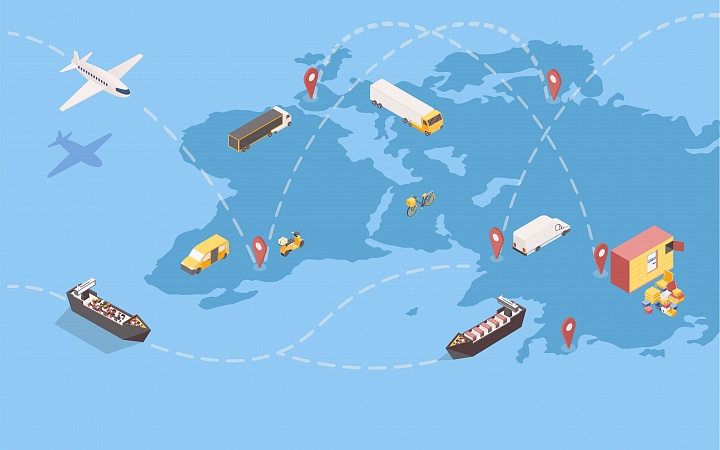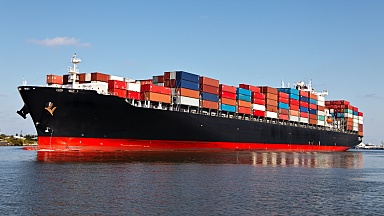Data from Xeneta shows that profit margins for carriers have risen from 5% in Q1, 2020 to 30% in Q2, 2021. For forwarders, they have risen from 3% to just under 8% in the same period.
Thorsten Diephaus, Xeneta Director of Strategic Accounts, said: «So you can see who is earning the money. When prices are higher it is easier for freight forwarders to make a decent margin, but it is not forwarders who are benefitting most.»
Peter Sand, Chief Shipping Analyst at BIMCO, said that profitability has also been boosted by very stringent cost control. «We have seen carriers drive down costs in every bit of their business over the last few years. For instance, introducing ultra-large container ships offers opportunities to reap economies of scale — as long as you are full.
«All the effort is now coming into effect with record low costs per box. Carriers are benefiting not just in the spot market but there is also a spillover into longer-term contracts. And this is important because the lion’s share of business is long-term contracts. Though some carriers reply more on spot rates than others.»
On the other hand, some of the decisions made by shipping lines over the last few years have not helped their current situation.
Sand said: «Carriers are now ordering new boxes to mitigate a decade-long tendency for them to slim their numbers down. It used to be when a carrier ordered a newbuild, it would also order three boxes for every capacity unit on the ship. They then cut that down to two and we can see the effects now.»
Charter rates
Tonnage providers are also making most of a red hot market. «Rates at an all-time high — coming back from the abyss of an all-time low in May 2020. Many tonnage providers are now asking for 24 month contracts rather than the normal 6 or 12 month charter hire.
«They are doubling down. If you want lower rates, you need to sign up for a longer period of time. And carriers are spending money even on old ships that were dead commercially five years ago.»
The capacity to build more ships is limited, with full order books for container ships until 2023/24. «Some carriers are also investing in cargo planes to expand their services to clients,» said Sand. «They are seeing business slipping away unless they take steps to serve their customers who want to become airborne.»
He had heard the reports of dry cargo ships and even bulkers being loaded with containers in Far East, but said this is unlikely to continue as more of their own cargoes are coming back.
«In the end, you can put more tonnage on but the delays at ports and terminals and the congestion still means that market rates go up. In effect you can’t carry more cargo than you did in previous years.»
Average freight rates
Although everyone has heard rumours of $20,000 a box, the audience at Xeneta’s August 2021 State of the Ocean Freight Market Webinar was told it was more important to look at averages.
Diephaus said that Xenata data shows that revenue per TEU in first half of 2021 was $1500 — 2000 compared to $900 — 1100 in the past. «We do see extremely high rates, but averages are a better guide — and we do see significantly higher averages.»
The data also shows that the market is still on an upward trend for short and long-term contracts. «But supply chain insecurity is the biggest issue for majority of shippers — transit times, rollovers, number of days longer than expected. Some have had to move to airfreight in order to keep production plants running.»
Sand said it was a fragile supply chain on a global scale. «What options do shippers look at when looking at future procurement? Will they seek an alternative to seaborne cargo? Is there any real alternative in terms of pricing? I doubt it. You could look at bringing production back. But no option is cost-free.»
Frontloading cargo
He said that the market is really strong and many shippers are doing what they can to frontload cargo so that their inventories do not run short. «But the market is already red-hot, so any frontloading by shippers is mainly pushing up rates, not volumes — as that is next to impossible now. We are just seeing more rollover of cargo.»
Sand asks the same question many observers pose — how long can this go on? «We have frontloading and the stimulus of demand spike. At some time this must change as consumers start to spend more money on services — holidays, movies, eating out. Money will no longer all be spent on goods that need to arrive by container. Perhaps in half a year from now? Hard to call. It will take time for all disruptions to unwind and for demand to ease.»
However, he warns that even after the market recovers from the current problems and returns to more normal conditions, this will not necessarily last.
«US dockworkers need to agree on new contracts next year so this could cause some disruptions. But carriers are now world champions in making their contingency plans. It is like a whack-a-mole game trying to keep up with disruptions — it could also be weather or something like the recent Suez Canal incident. Smooth sailing is the odd one out.»




